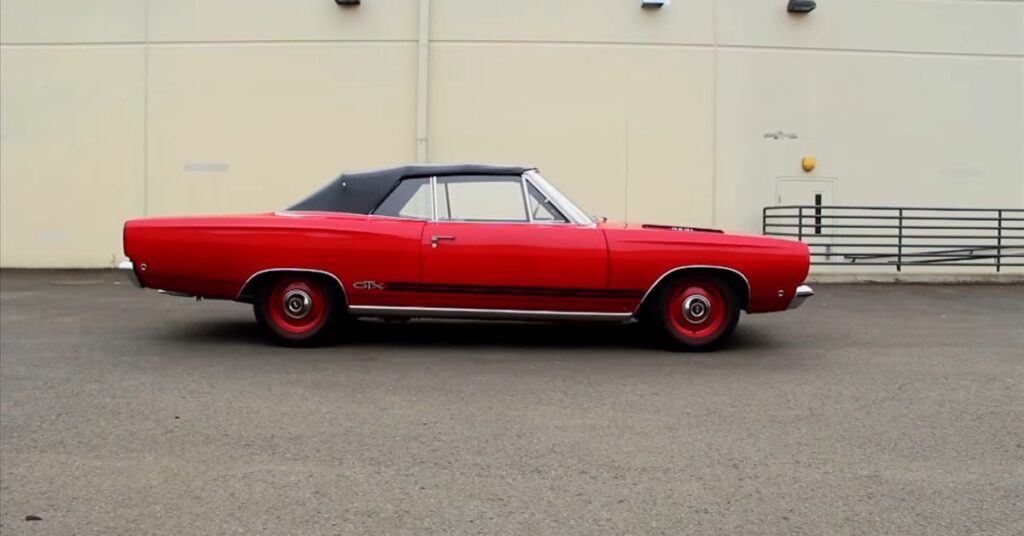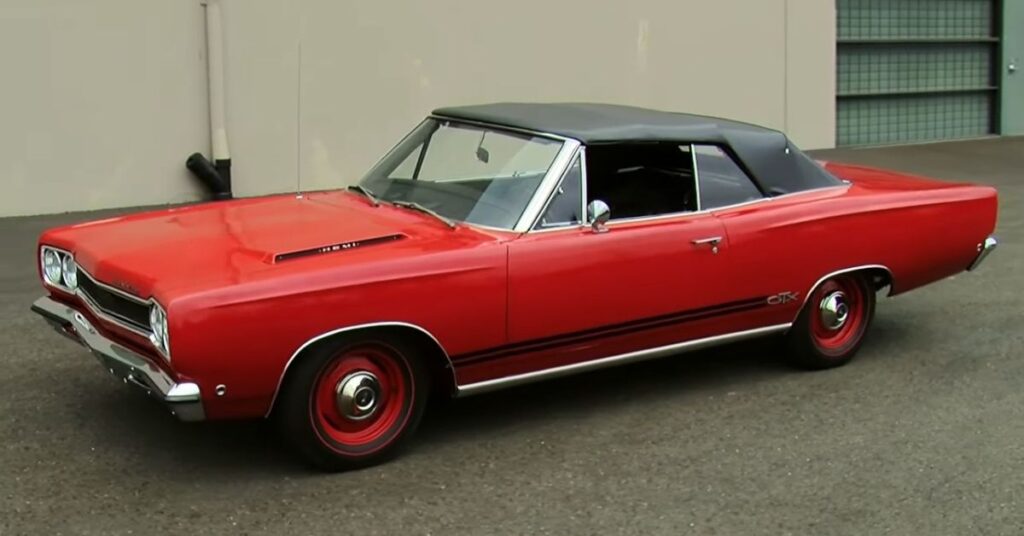In this episode of Muscle Car of the Week, we delve into the iconic 1968 Plymouth GTX 426 Hemi Convertible. Known for its raw power and luxurious features, this classic muscle car captured the hearts of automotive enthusiasts during its time. Let’s explore the details and specifications that make the 1968 Plymouth GTX 426 Hemi Convertible a true gem in automotive history.
The Definition of a Muscle Car
A loose definition of a muscle car is a stripped-down car built on an intermediate-sized platform but stuffed with the largest and most powerful engine available at the time. Muscle cars gained popularity due to their immense power and flashy style. However, many people desired the luxury accommodations found in other cars. To meet this demand, automakers started producing fancier versions of these bare-bones muscle cars.
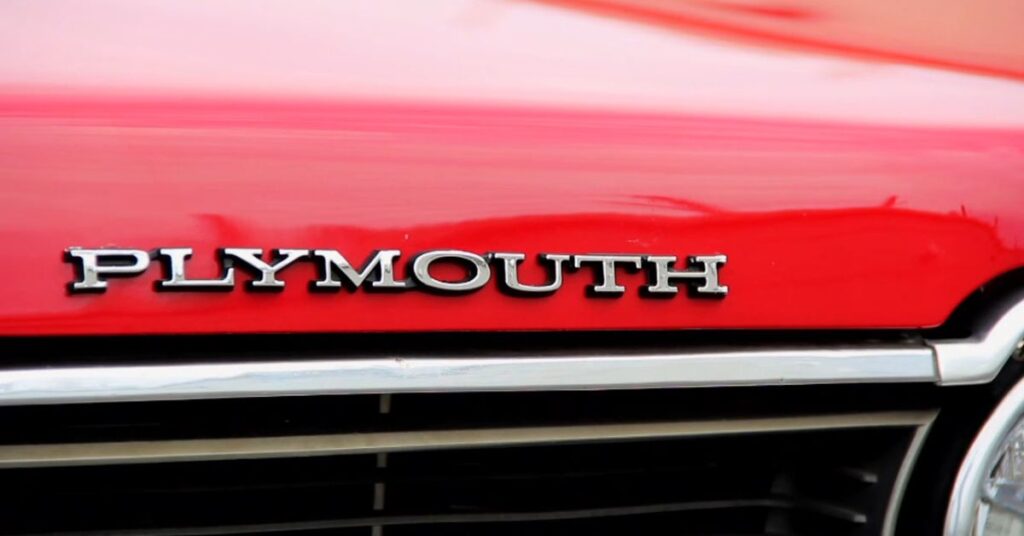
Among the exceptional variants produced, the 1968 Plymouth Roadrunner GTX convertible stands out. This outstanding car is one of only 24 ever built. It features various enhancements and comes powered by the legendary 426 Hemi engine. Let’s explore the remarkable features that make this car truly unique.
Exterior Features
The Plymouth GTX boasts a range of distinctive exterior elements that set it apart and make it easily recognizable. Notably, stripes running across the bottom of the car, special GTX badges, and unique wheel covers contribute to its overall elegance. Moreover, the GTX’s long and lean body, complemented by subtle flares that contour its shape, exudes a strong sense of style and power. Drawing attention, the hood features a bold side-facing scoop design, serving as a prominent visual cue that hints at the mighty Hemi engine lurking beneath.
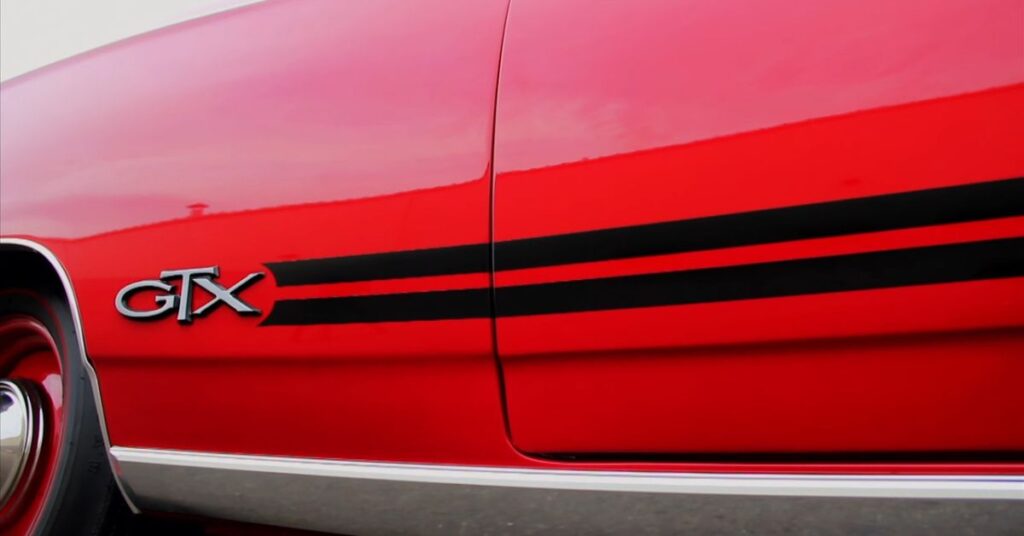
The combination of these exterior features showcases the exceptional design and attention to detail that went into creating the Plymouth GTX. It’s no wonder that this classic muscle car continues to captivate automotive enthusiasts with its striking appearance and unmistakable presence on the road.
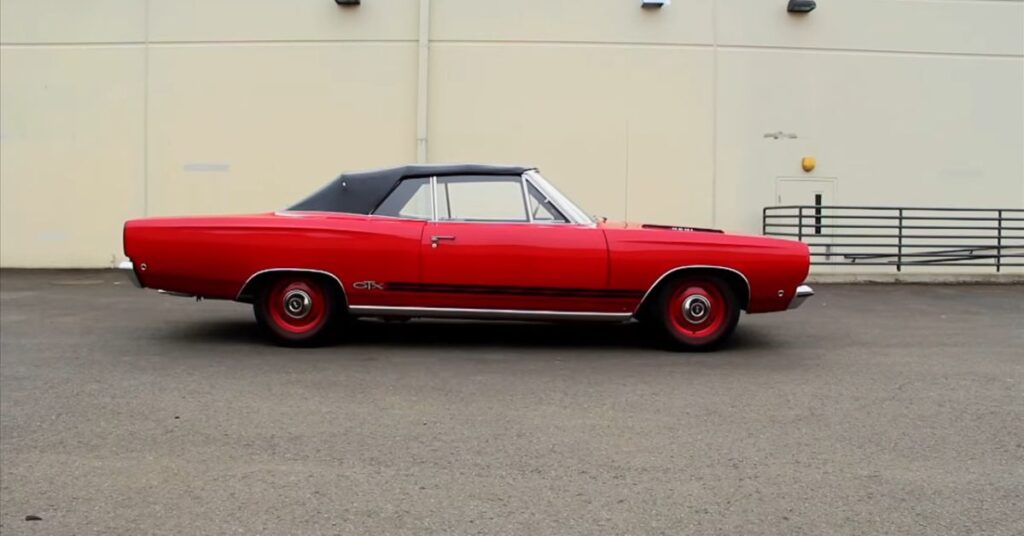
Whether it’s the sleek stripes, the prominent badges, or the commanding scoop on the hood, the exterior of the Plymouth GTX leaves an indelible impression on all who have the pleasure of witnessing its awe-inspiring beauty.
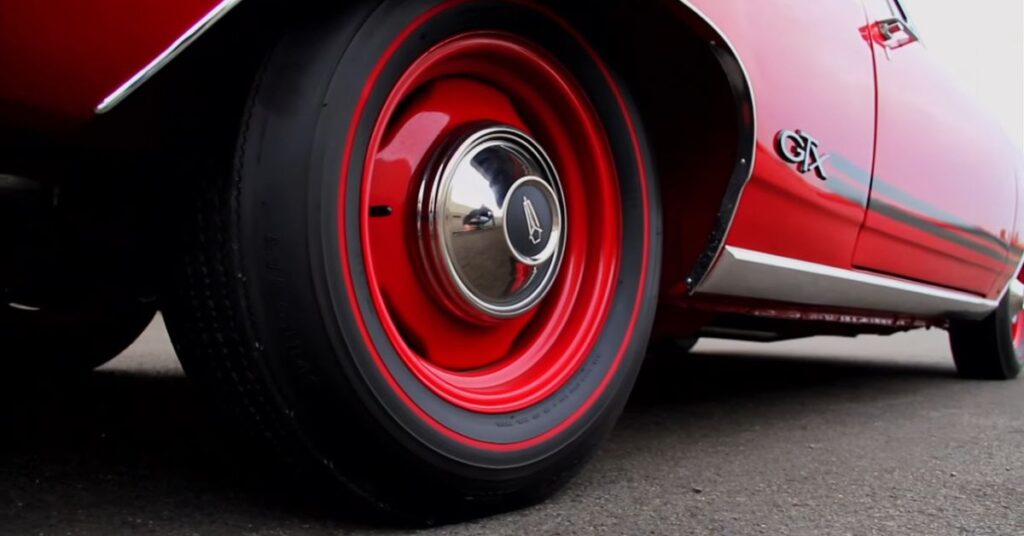
The 426 Hemi Engine
The 426 Hemi engine, while not introduced in 1968, continues to be an engineering marvel that commands admiration. Originally designed for racing applications, Chrysler made the bold decision to offer these powerful engines for street use as well. The street Hemi version made its debut in 1966, and the 1968 Plymouth GTX is outfitted with a formidable 425 horsepower Street Hemi engine. The sheer power and performance delivered by the Hemi engine are truly awe-inspiring. With over 400 foot-pounds of torque available at just 2,000 rpm and nearly 500 foot-pounds around 4,000 rpm, this engine packs a mighty punch.
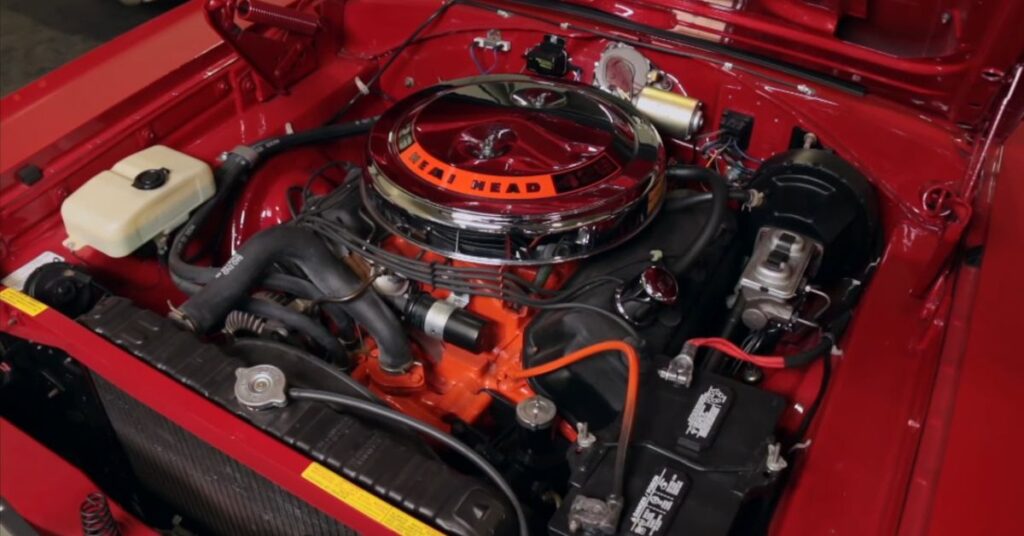
The 426 Hemi engine’s capabilities are not merely limited to its remarkable power output. Its engineering excellence is evidenced by the meticulous design and craftsmanship that went into its creation. With a combustion chamber size comparable to a softball and a robust combination of dual four-barrel carburetors, solid lifters, and high-strength internals, the Hemi engine is optimized to generate power and rev freely. These features contribute to an exhilarating driving experience and allow the engine to thrive at high rpm levels, making it an exceptional choice for speed enthusiasts.
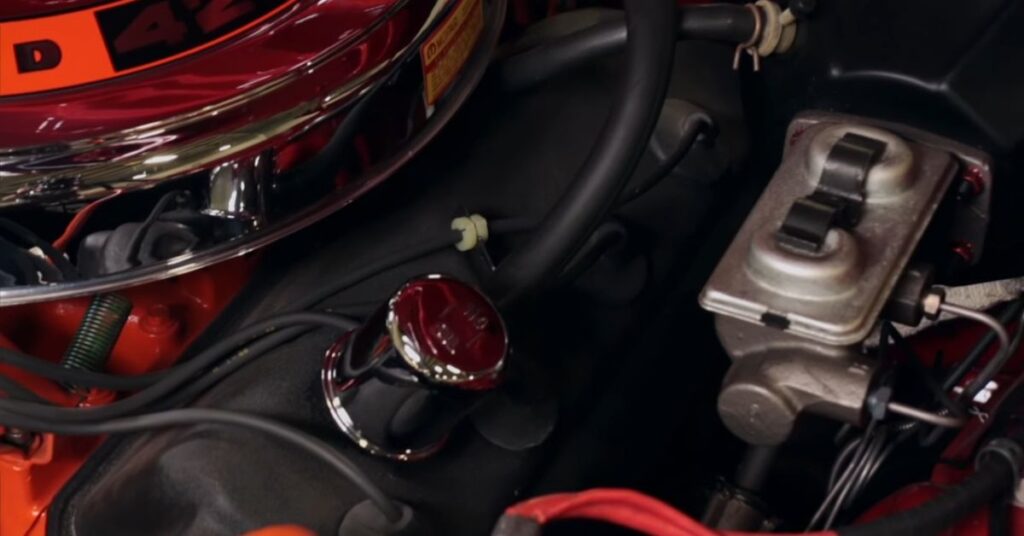
In summary, the 426 Hemi engine represents the epitome of power and performance. Its racing heritage combined with its availability for street use makes it an iconic piece of automotive engineering. With its impressive torque and horsepower figures, the Hemi engine has left an indelible mark in the world of American muscle cars, including the remarkable 1968 Plymouth GTX.
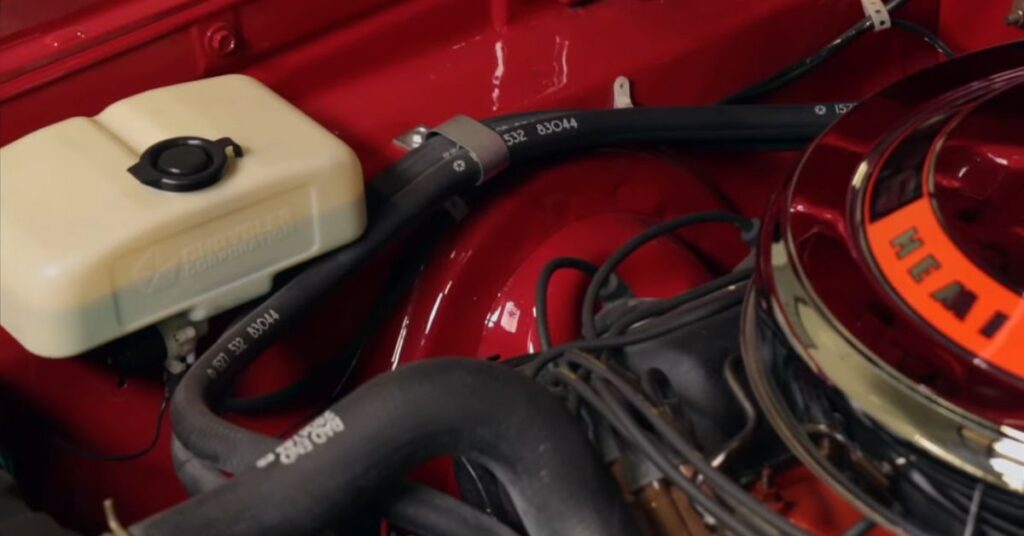
Performance and Transmission
The 1968 Plymouth GTX utilizes the power of the Hemi engine to deliver exhilarating performance. With dual four-barrel carburetors, solid lifters, and high-strength internals, this car is built for speed. The TorqueFlite 727 automatic three-speed transmission ensures smooth gear changes, further enhancing the driving experience.
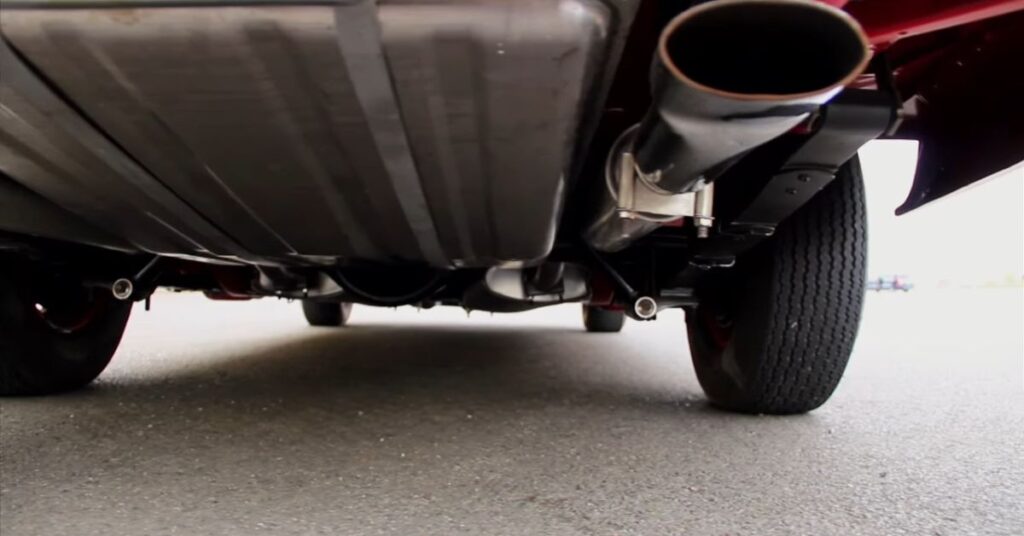
While the Plymouth Roadrunner was marketed as a no-frills muscle car, the GTX aimed to attract higher-end car buyers who sought both performance and luxury. The GTX features beefed-up torsion bars and shocks for improved handling. The rear leaf springs are fortified for Hemi engine cars. An 8 and 3/4 rear axle housing with a locking differential and 3.23 to 1 rear gears provide a comfortable and enjoyable driving experience.
Design and Styling
The design of the Plymouth GTX reflects its status as a high-end muscle car. The clean grille, blacked out to frame the GTX badge, exudes sophistication. The rear of the car boasts a full-width cast aluminum trim piece finished in argent silver, enhancing its stylish appearance. Inside the car, the GTX offers a clean and crisp interior with thin bucket seats and a full-length console. The woodgrain trim on the dash and doors adds a touch of elegance.
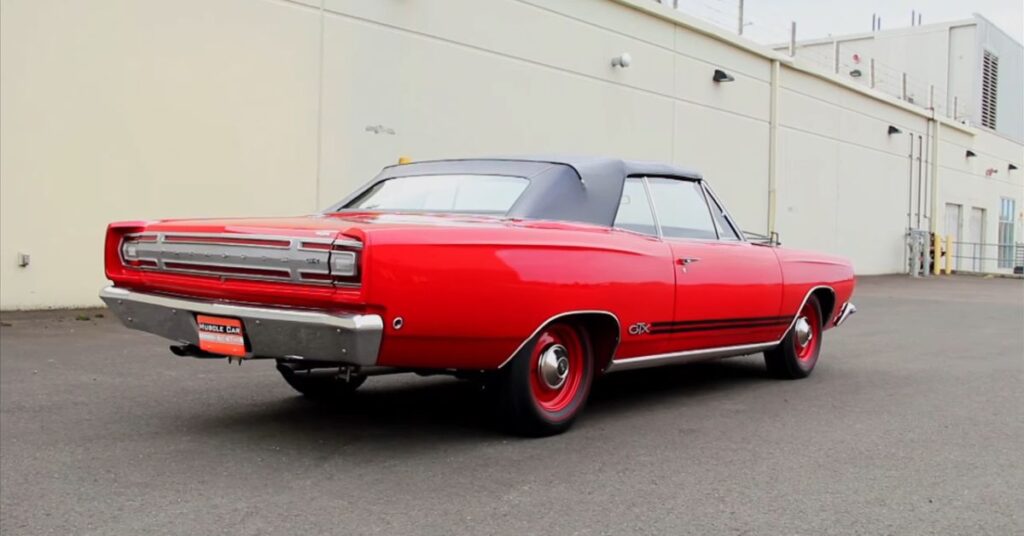
Owning a 1968 Plymouth GTX 426 Hemi Convertible is a privilege, as only a handful of these remarkable cars remain in existence today. Its rarity and collectability make it highly sought after by enthusiasts and collectors alike. The bright red version showcased in this episode proudly resides in the esteemed Brothers Collection, a testament to its enduring appeal.
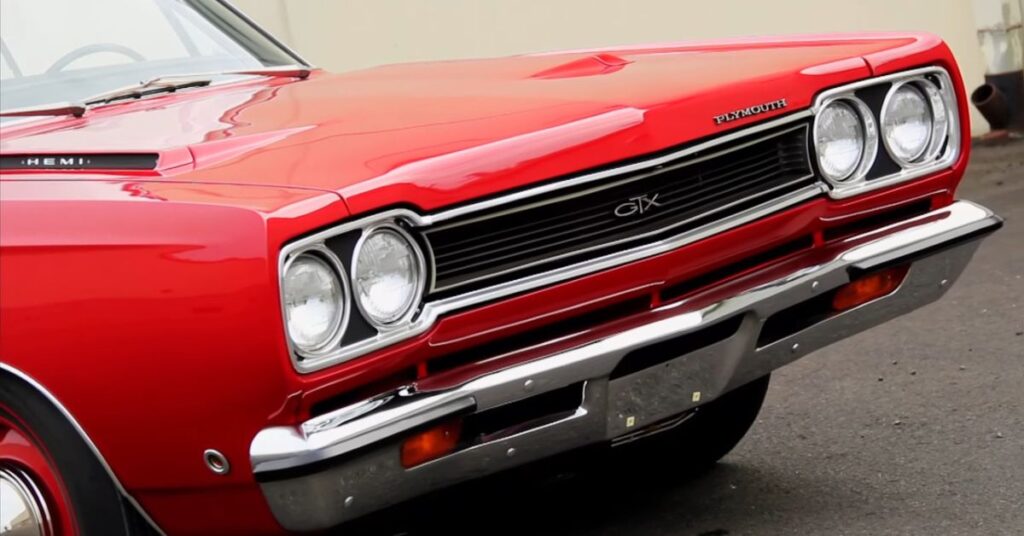
The Interior
The interior of the 1968 Plymouth GTX 426 Hemi Convertible exudes a sense of refined luxury, offering a captivating blend of comfort and style. The thin bucket seats, meticulously designed, provide both support and comfort for an enjoyable driving experience. The full-length console, adorned with woodgrain trim, adds a touch of sophistication and serves as a functional space for storing essentials. With its ribbed chrome top plate, the automatic shifter effortlessly emerges, reflecting the attention to detail that went into crafting the interior.
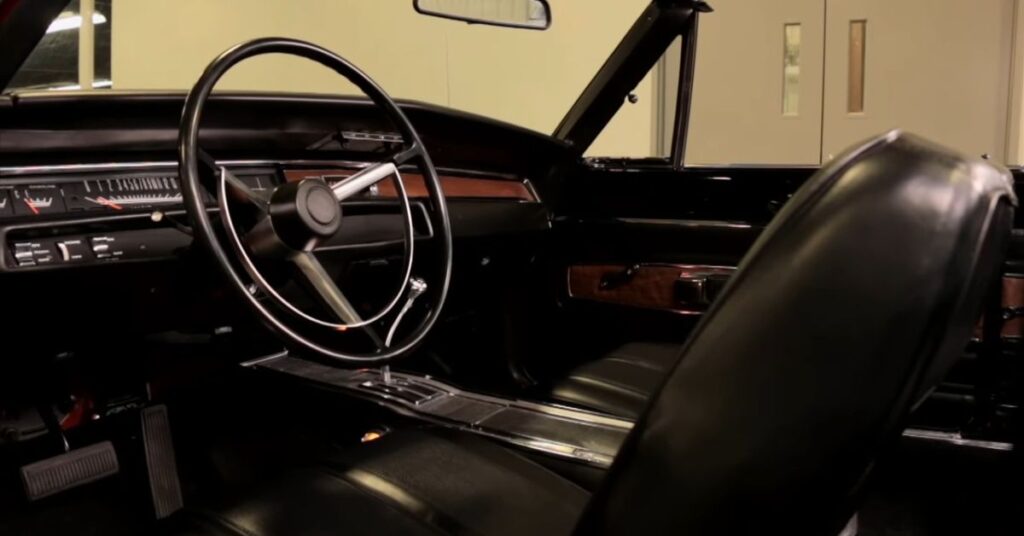
As you step inside the GTX, you’ll notice the sweepers-style gauges, reminiscent of the typesetting used during the Apollo space program. The gauges not only provide essential information but also add a nostalgic charm to the dashboard. Thin and precise, the lettering on the gauges contributes to the overall aesthetic appeal, capturing the essence of classic design.
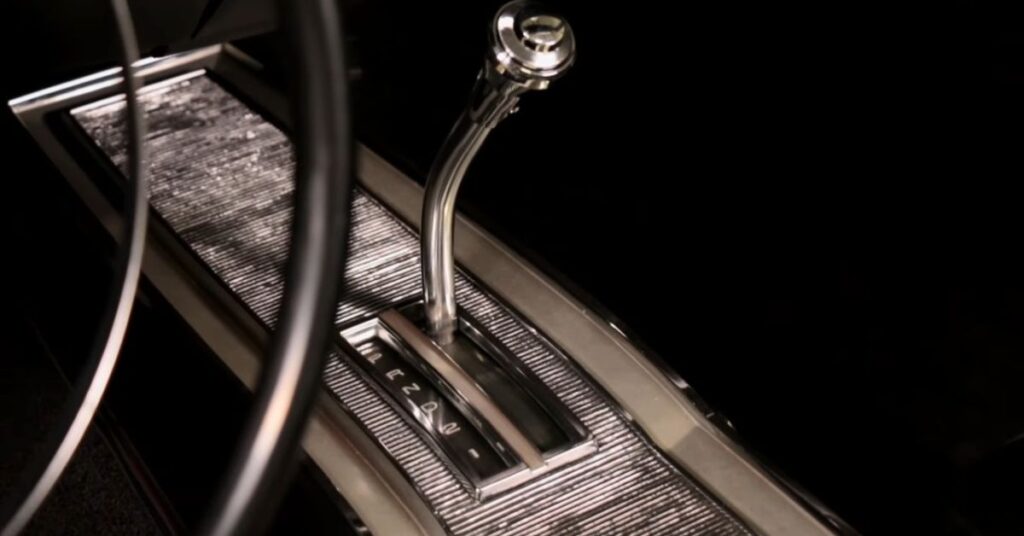
While luxury features were not the primary focus of muscle cars, the Plymouth GTX manages to strike a balance between performance and amenities. Although air conditioning was not included, the car offers a basic AM radio for entertainment during long drives. One notable convenience is the power top, making it effortless to enjoy open-air motoring at the touch of a button.
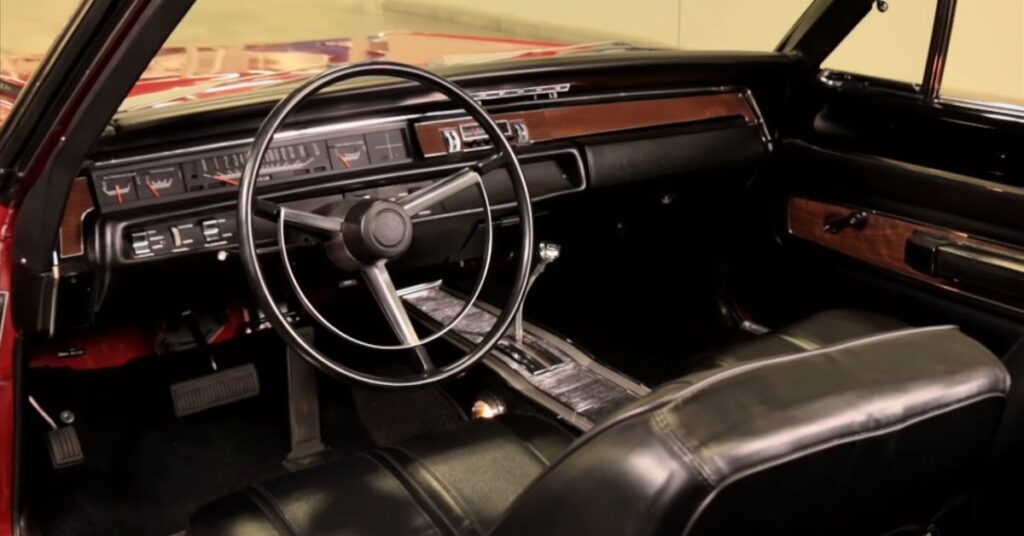
Crank windows, though less convenient than power windows, align with the car’s performance-oriented nature. Despite lacking certain modern conveniences, the overall interior design of the 1968 Plymouth GTX 426 Hemi Convertible remains clean, crisp, and evokes a sense of timeless elegance.

In conclusion, the interior of the 1968 Plymouth GTX 426 Hemi Convertible embodies a fusion of comfort and style. From the thin bucket seats and full-length console to the sweepers-style gauges and woodgrain trim, every detail contributes to an atmosphere of refined luxury. While the car may lack certain modern amenities, it compensates with its inherent charm and a focus on delivering an immersive driving experience.
Conclusion
The 1968 Plymouth GTX 426 Hemi Convertible represents the pinnacle of American muscle cars. Its combination of power, luxury, and timeless design captivates automotive enthusiasts to this day. The 426 Hemi engine, with its remarkable performance, adds a level of excitement that sets this car apart from its counterparts. Whether you’re a fan of muscle cars or a collector of automotive history, the Plymouth GTX will forever hold a special place in your heart.
